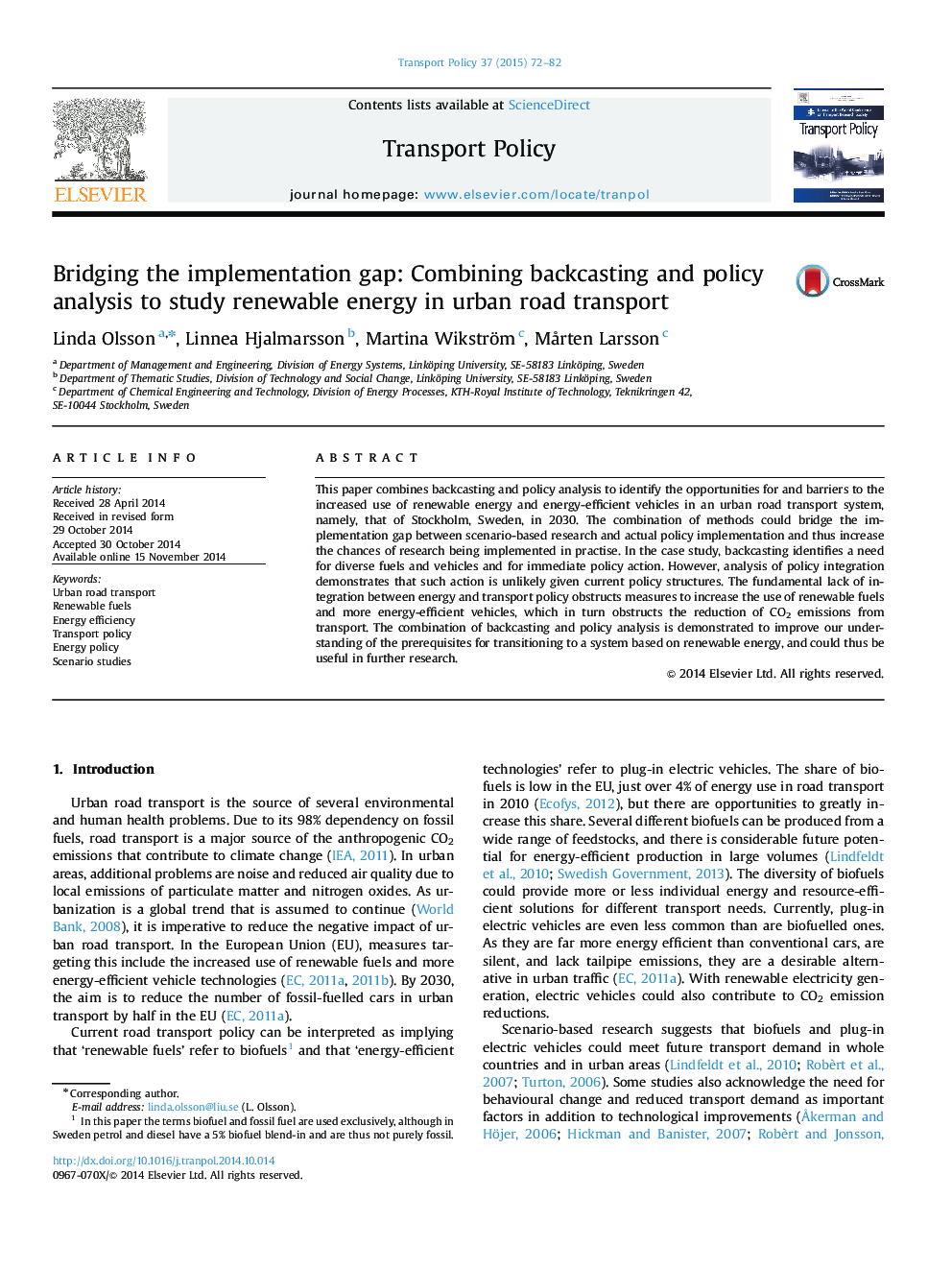| Article ID | Journal | Published Year | Pages | File Type |
|---|---|---|---|---|
| 1064916 | Transport Policy | 2015 | 11 Pages |
•Combining backcasting with policy integration analysis is a useful approach.•We identify problems encountered when working towards sustainable road transport.•The policy process holds constraints for desired future scenarios.•Realistic expectations could improve the use of scenario studies.•Our approach could decrease the gap between research and policy implementation.
This paper combines backcasting and policy analysis to identify the opportunities for and barriers to the increased use of renewable energy and energy-efficient vehicles in an urban road transport system, namely, that of Stockholm, Sweden, in 2030. The combination of methods could bridge the implementation gap between scenario-based research and actual policy implementation and thus increase the chances of research being implemented in practise. In the case study, backcasting identifies a need for diverse fuels and vehicles and for immediate policy action. However, analysis of policy integration demonstrates that such action is unlikely given current policy structures. The fundamental lack of integration between energy and transport policy obstructs measures to increase the use of renewable fuels and more energy-efficient vehicles, which in turn obstructs the reduction of CO2 emissions from transport. The combination of backcasting and policy analysis is demonstrated to improve our understanding of the prerequisites for transitioning to a system based on renewable energy, and could thus be useful in further research.
